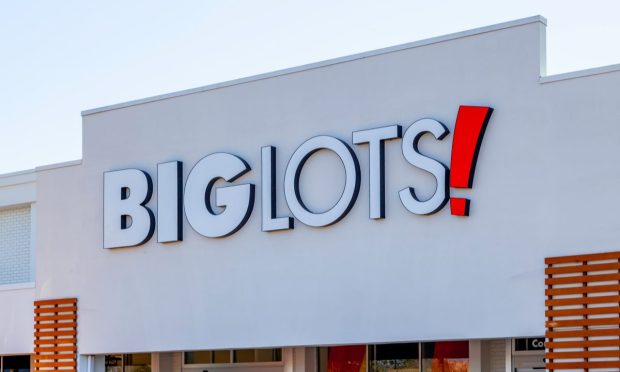
Still feeling strain on their budgets from ongoing macroeconomic challenges, consumers are cutting out pricy nonessential purchases, according to Big Lots.
On Thursday (June 6), the discount home goods retailer, which has more than 1,300 locations across the country, reported lower-than-expected first-quarter fiscal 2024 financial results, attributing its 10.2% net sales decrease in part to shoppers’ belt-tightening behaviors.
“We missed our sales goal due largely to continued pullback and consumer spending by our core customers, particularly in high-ticket discretionary items,” Bruce Thorn, president and CEO of Big Lots, said. “The consumer environment softened in the first quarter, as both consumer confidence and sentiment declined due to concerns about inflation, unemployment and interest rates.”
He highlighted especially high pullback for indoor and outdoor furniture. Consumers are evidently tightening their belts, focusing more on essentials and less on luxury or non-essential purchases.
Indeed, the data bears out that many consumers are sticking to necessities. According to the February/March edition of the PYMNTS Intelligence “New Reality Check: The Paycheck-to-Paycheck Report,” which surveyed over 4,200 U.S. consumers, 60% of respondents have scaled back on nonessential retail purchases due to price increases.
In response to these economic pressures, consumers are increasingly gravitating toward bargains. The study also found that half of shoppers have begun opting for more affordable retailers amid inflation.
Big Lots has observed this shift and is adapting its strategy to meet the demand for value. Thorn emphasized the company’s focus on bargains and on communicating “unmistakable value” to attract price-sensitive shoppers. This approach is resonating well, as evidenced by the success of their extreme bargain offers, which have favorably shifted sales trends in several categories.
The company’s strategy involves significantly increasing the proportion of its assortment classified as bargains. By the end of the year, Big Lots aims for 75% bargain penetration, with extreme bargains accounting for 50% of this.
“Our closeout rate or extreme bargain rate at 28% is the highest [it’s been] since I’ve been with the company in nearly 10 years and, so you can see where this is going,” Thorn said. “We’re accelerating into this, and we see no ceiling at this point.”
One category in which the extreme bargain rate has grown in grocery, reflecting consumers’ particular desire for more affordable food options. Earlier this year, a PYMNTS Intelligence survey of over 1,700 U.S. consumers revealed that 86% have adjusted their grocery shopping habits due to rising prices. Among the respondents, 44% reported switching to more affordable retailers, while 34% indicated they had opted for lower-quality products.
Big Lots is leveraging digital campaigns and effective store layouts to highlight their bargains, making it easier for customers to identify and take advantage of the deals. The use of social media influencers to promote monthly bargains has also led to higher engagement rates, with consumers increasingly responsive to digital and social media marketing efforts.
As shoppers increasingly prioritize essentials and seek out value in the face of inflation and economic uncertainty, Big Lots is doubling down on its bargain-focused approach. By significantly increasing its assortment of extreme bargains and leveraging digital marketing strategies, the retailer aims to capture the attention and loyalty of budget-conscious shoppers.